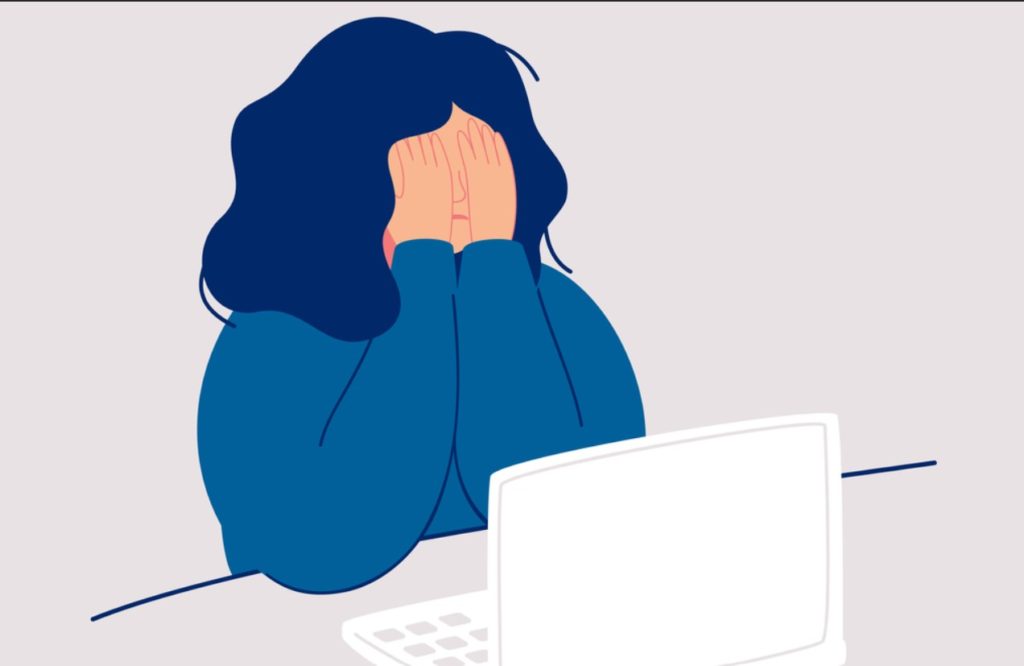
With increased abundance and reliance on the internet and its resources, we are aiming to optimise our living experience to its fullest potential. However, needless to say, it comes with its binaries of merits and demerits.
Virtual sexual harassment, online abuse, digital harassment, cyber bullying- cyberbullying goes by a glossary of terms, specifications, definitions, and nuances, surmounting to harassment pursued ‘online’. It is one of the internet’s preeminent demerits. The term ‘online’ entails “email, social media platforms (such a s Twitter, Facebook, Instagram, and TikTok), messaging apps (such as Facebook Messenger and WhatsApp), blogging platforms (such as Medium, Tumblr, and WordPress), and comments sections (on digital media, personal blogs, YouTube pages, and Amazon book reviews).”
The onset of the COVID-19 pandemic has changed the topography of our lives in more ways than one. Despite the life-threatening events, the human race has found ways around it to resist and survive. While work from home was not a novel concept, receiving education online has found its germination, right from the roots of the country in the villages to the urban spaces.
Desperate times call for desperate measures! While the workload rose manifold while “working from home” and the quality of education disseminated has been questionable due to more factors than one, a predicament that has slithered its way through vigorously is cyberbullying.
Back in 2012, the Global Youth Online Behaviour Survey conducted by Microsoft placed India at the third rank in cyberbullying. Data released recently by the National Crime Records Bureau has shown that “Cases of cyberstalking or bullying of women or children increased by 365 from 542 in 2017 to 738 in 2018”. Meanwhile, the conviction rate for cyberstalking or bullying of women and children fell 15 percentage points, to 255 in 2018 from 405 in 2017. However, during the same period, the pendency percentage saw an increase of one percentage point to 96% according to the data.
While a number of factors contribute to committing the act of cyberbullying, they have changed considerably during the pandemic. The pandemic has forced people to be isolated in their houses, be subjected to bouts of uncertainty, and have their interactions with others be limited to ‘online’ platforms. The aforementioned aspects make them increasingly susceptible and vulnerable to being cyber bullies taking advantage of these situations. “Cyberbullying is a byproduct of both, increasing anxiety of individuals and the malevolence of cyber attackers.”
It has to be acknowledged that there are facets that contribute to the acts of the perpetrator as well. “[..] as per Nishant Shah, professor at the Institute of Culture and Aesthetics of Digital Media at the Leuphana University in Germany [..] One is the naturalisation of violence that is common on social media. [..] Second, it deals with anonymous or distantly mediated interaction which takes away both the human presence and the social empathy which is often encoded in our communication. Third, it refers to the orchestrated algorithmic structures that target specific people in order to silence them or harass them through abuse of power.”
A research study conducted by Symantec (an American consumer software company) places India “as the country facing the highest cyber bullying in the Asia Pacific region, more than Australia and Japan” It has been concurred that bullying, whether in the real world or the virtual, is a means to stay in power and validate the same by hurting or abusing others. Shah affirms that this behaviour owes to the insufficiency of “social governance and political processes to shape and train people into recognising each other as human”. (Maheshwari, 2020) The clandestine nature of the same aids to the perpetrator who might themselves be “maladjusted individuals, who exploit its anonymous or distantly mediated interactions.” (Maheshwari, 2020)
With the reality of the pandemic that we have been ushered into, the exposure of children of all age groups to the internet has enhanced which has made them susceptible to the evils that lurk within it. More often than not, similar to bullying at schools, cyberbullying is also something that children do not even report such cases.
From offensive name calling to false rumours to receiving unwarranted sexual images, to physical threats, to explicit images shared without their consent. Bullying and harassment, especially online, have become overly normalised to the extent that children, one, do not recognise behaviour and patterns as being that of bullying. Along with that, the loss of agency during such cases and the absence of an adult confidant makes them spiral further into the repercussions of the same which includes declining mental health.
In light of the foregoing discussion of cyberbullying pertaining to children, it is imperative to throw light on the nature of harassment that women professionals have continued to face during the pandemic. From getting unnecessary video call requests at odd hours, to being talked down during virtual meetings and made to feel guilty of their household responsibilities, inappropriate dressing of colleagues during online meetings, to passing of improper comments, and the list is endless.
Women are oftentimes caught in the crossroads of where to draw the line when it comes to online harassment, especially during such circumstances. The number of complaints received by the National Commission for Women (NCW) has significantly dropped since the onset of the pandemic. It has to be highlighted that they also fear the security of their jobs during the pandemic and refrain from reporting the cases due the consequences that the report may implicate.

In comparison to heterosexual, cisgender people, the amount, intensity, and gravity of online abuse and bullying directed towards people of the LGBTQ+ community is exceedingly atrocious and the community is disproportionately victimized. The research on and appropriation of the same is comparatively less,which drives us to the point that acknowledgement and redressal of the same should be an imperative which must be acted upon.
In the light of the above-said, we come to the point of redressal for the same. It is of utmost importance that there be public literacy of cyberbullying in schools and at home. There should be campaigns to propagate awareness of the same and the creation of safe spaces wherein children and adolescents can, without inhibitions, share their experiences and seek help. Yatan Balhara, a psychiatrist with the Delhi-based All India Institute of Medical Sciences (AIIMS) said that both the victim and the perpetrator should be counselled because in most cases the accused may have a history of being bullied themselves.
More often than not women wish not to report such cases, however, they would want to be aware of what would be the right form of action during such cases. Awareness is key. There should be clear-cut guidelines for work from home scenarios. The Prohibition of Sexual Harassment Act 2013 (POSH) was enacted in order to secure “safe working spaces for women and to build enabling work environments that respect the rights of working women to equality of status and opportunity.” It should be ensured that policies which each organisation has in place concerning bullying and harassment are updated and appropriated to. Needless to say, the existing cyber laws pertaining to child issues, women, LGBTQ+, and cybercrimes should be revised and made up to date with.
Smriti has done her BA in Literature from Hindu College, Delhi University and MA in Literature from Jamia Millia Islamia University. She is also an Alumna of SBI Youth for India Fellowship.
In a room of her own, you will often find Smriti speak to spectral masked vigilantes who save the world of mortals during nocturnal hours. As a sensorial hybrid, she believes in the sight of bright colours, sound of mountain rivers, loving touch of jumping puppies, and fragrance of old books. Smriti aspires to work as a teaching faculty to create a dialogic classroom space with vibrant discussions.


I savour, lead to I discovered just what I used to be having a
look for. You’ve ended my 4 day lengthy hunt!
God Bless you man. Have a nice day. Bye
Also visit my site james (Tracey)